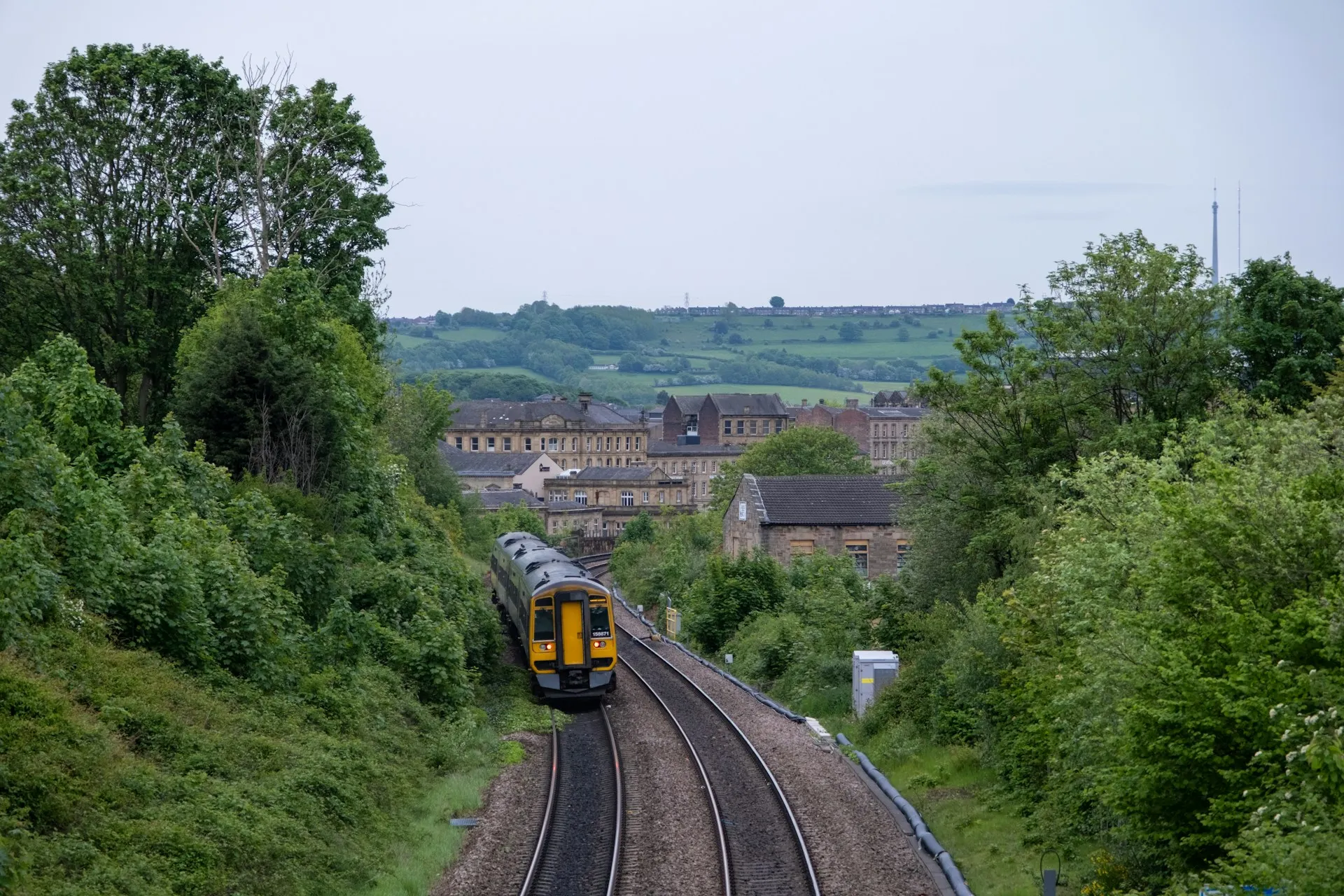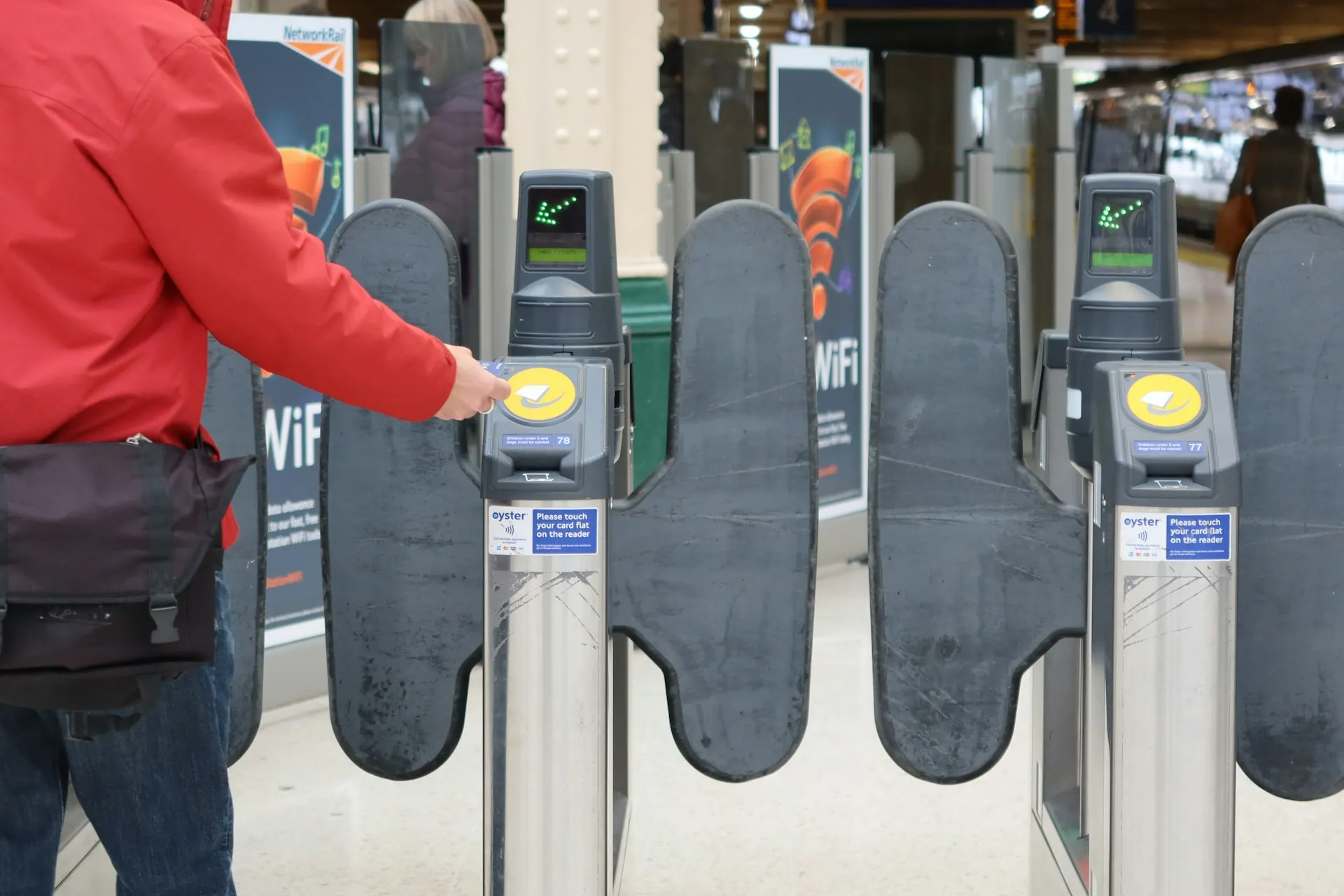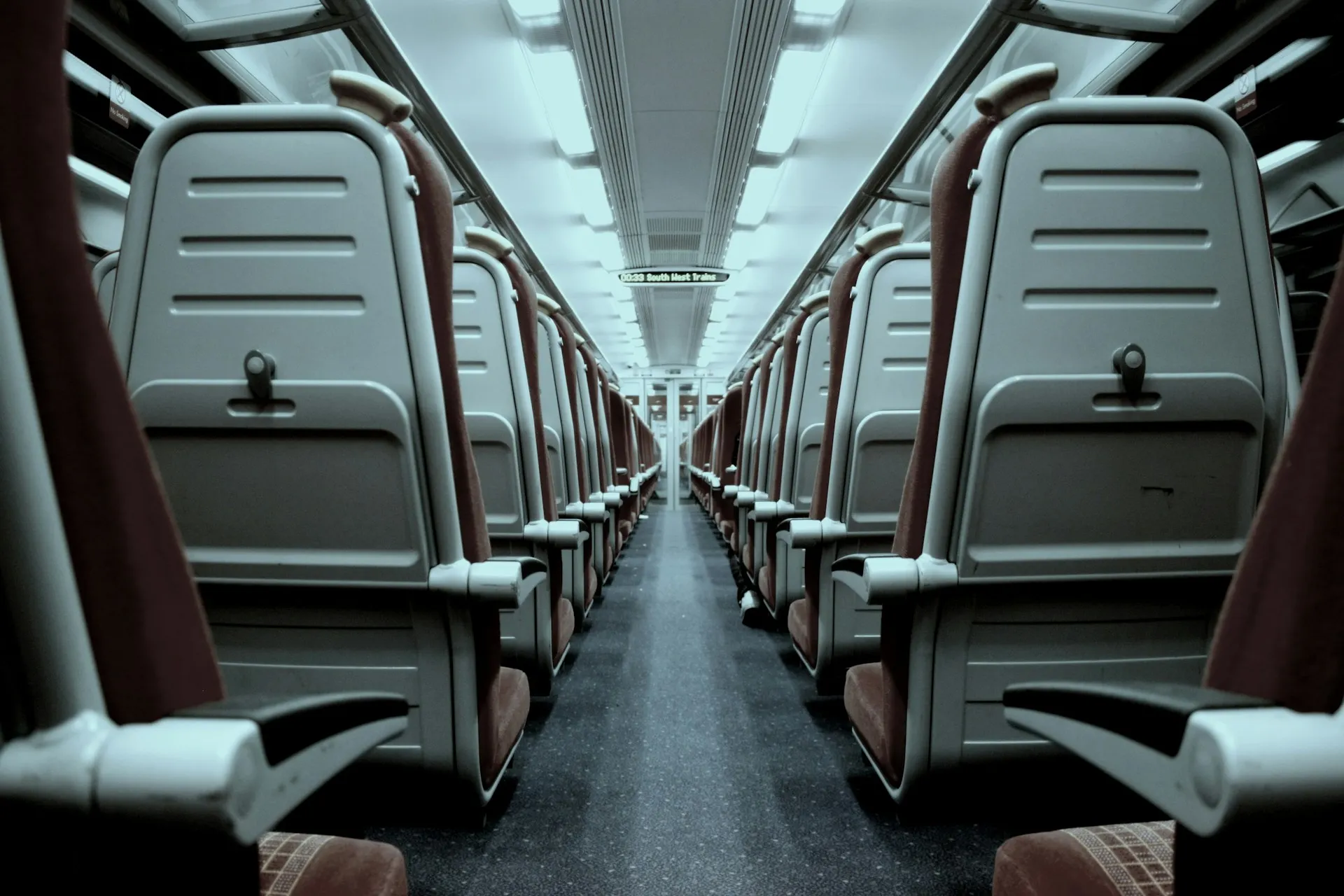For first-time visitors or even locals unfamiliar with the intricacies of the railways, train travel in the UK can seem complex. However, once you understand its quirks—many stemming from centuries of adaptation and modernisation—it quickly becomes an accessible and enjoyable way to get around. Whether you’re planning a beach holiday, a trip to the countryside, or simply your morning commute, travel by rail in Britain opens up countless possibilities.
Boasting the world’s oldest railway network, the UK’s rail system has evolved into one of the most efficient and expansive in the world, making it an ideal choice for exploring this remarkable country. With over 2,500 stations connecting bustling cities, picturesque countryside, and even neighbouring European destinations, trains are a popular and practical way to travel.
Our extensive guide has everything you need to navigate the UK’s train system confidently. From a breakdown of ticket types to a complete list of train operators, a look into the world of Railcards to the key UK train terms to remember, we’ve got you covered. So, whether you’re a tourist exploring new horizons or a local rediscovering your homeland, let’s get started on your rail adventure!

How does the UK train network operate?
The UK train network operates under a combined system of public oversight with private operation. The publicly funded organisation National Rail, established after the 1996 privatisation of British Rail, oversees these rail services. Following this privatisation, the network was initially split into 25 operating franchises, although there are now 28 train operating companies providing services across England, Scotland, and Wales. Each of these companies is responsible for specific routes and services.
In parallel, Network Rail, a separate public body, is tasked with managing the UK’s rail infrastructure. This includes maintaining over 20,000 miles of track, major stations, timetables, and logistics, as well as ensuring safety standards. Network Rail plays a critical role in enabling smooth operations, providing the backbone on which train operating companies deliver their services.
How does this work for passengers?
Ticketing and Coordination:
Thankfully, National Rail simplifies the whole process by offering a centralised ticketing system, regardless of which train operating company runs the service. This makes it easy to book journeys that span multiple operators.
Service Types:
Each train operating company provides specific types of services, from long-distance routes connecting major cities to regional and commuter lines serving towns and suburbs. Examples include LNER for East Coast Main Line routes and Avanti West Coast for the West Coast Main Line.
Regional Variations:
While National Rail covers most of the UK, regional networks like Transport for London (London Underground and Overground) or ScotRail (Scotland) integrate with the broader rail system, providing seamless connectivity.]

Why travel by train in the UK?
There are plenty of reasons that we believe the trusty train is the best way to traverse the UK. Here are just a handful:
- Extensive network coverage: The UK is renowned for having one of the most comprehensive rail networks in the whole world, connecting over 2,500 stations across England, Scotland, Wales, and even Northern Ireland (via ferry connections). Whether you’re heading to iconic destinations like London, Edinburgh, or Manchester or venturing to smaller towns and villages, the rail system ensures you’re never far from your next stop.
- Affordable options: There are numerous ways to make train travel affordable. Options like advance tickets, off-peak fares, and railcards (e.g., for young people, seniors, or groups) can help you save significantly, all of which you can explore in greater detail below.
- Reduce the stress: Travelling by train eliminates many of the common stresses of road or air travel. Just to name a few examples, you won’t need to deal with traffic, navigate unfamiliar roads, or contend with the lengthy check-in and security queues at airports. And you can forget about struggling to find a parking spot, which is especially difficult in busy UK city centres! Instead, you can simply relax in a comfortable seat and enjoy the journey.
- Environmentally friendly: Rail travel is one of the most sustainable modes of transport, producing significantly lower emissions per passenger than cars or planes. By choosing the train, you’re reducing your carbon footprint and contributing to a greener planet.
- Efficient and fast travel: High-speed services like the West Coast Main Line (operated by Avanti West Coast) and East Coast Main Line (operated by LNER) provide quick connections between major cities. For example, you can travel from London to Edinburgh in just over four hours - much faster than driving.
- Scenic journeys: The UK’s rail routes are known for their breathtaking views. Some of the most scenic include the Settle to Carlisle Line, where you can marvel at the rugged beauty of the Yorkshire Dales and Ribblehead Viaduct; the Highland Main Line, which passes through Scotland’s stunning mountains and lochs; and the Cornish Riviera Route, for dramatic coastal vistas on the way to Cornwall. And that’s just to name a few!
- Direct international connections: With Eurostar, you can seamlessly travel from London to European cities like Paris, Brussels, and Amsterdam. These high-speed services offer a hassle-free alternative to flying and allow you to explore beyond the UK without ever needing to step into an airport.
- Cultural and historical significance: The UK is home to the world’s first railway system, making train travel a journey through history. From iconic stations like London St Pancras International to heritage routes like the Flying Scotsman, the UK’s railways are steeped in cultural significance. It’s not just transport—it’s a piece of living history!
UK train ticket guide
It’s important to note that there are various types of train tickets you can purchase in the UK, each with its benefits and conditions.
Popular types of UK train tickets
Advance tickets
Advance tickets are typically available up to 12 weeks before the date of departure (though this can vary) and, because they are purchased early, they can usually offer significant savings. However, they are only valid for the specific train and time you book, and are commonly non-refundable, meaning they are less flexible. Advance tickets are ideal for journeys that can be planned far in advance and for those who want to save money.
Anytime tickets
Anytime tickets provide total flexibility on any train along a specified route without being tied to a specific time, making them perfect for last-minute plans or uncertain schedules. However, this means they are typically the most expensive ticket option, and they don’t guarantee a reserved seat, meaning you may need to stand during peak times.
Flexi season tickets
Flexi Season tickets bundle eight day passes together, allowing for unlimited travel on eight chosen days within a 28-day period. They have become a popular choice within the modern ways of hybrid and part-time workers, especially those who will commute to an office a couple of days per week.
GroupSave tickets
GroupSave tickets offer discounts for groups of three to nine people travelling together on off-peak services, offering savings of up to 34% on standard fares - an excellent way to save money when travelling with family or friends.

Peak vs. off-peak vs. super off-peak
Peak time refers to the busiest times of rail travel, often before 9:30 am and between 4:00 and 7:00 pm on weekdays. Off-peak refers to the time between 9:30 am and 4 pm, and then after 7 pm on weekdays, as well as all day on weekends and bank holidays. Super off-peak time can vary but commonly refers to the time between 10 am and 3:30 pm, and any time after 7:15 pm.
Peak tickets
- When to Use: These tickets are valid during the busiest travel times, typically weekday mornings and evenings when commuters flood the network.
- Advantages: They offer flexibility to travel at any time, including during peak hours, which is often necessary for commuters.
- Drawbacks: Peak tickets are the most expensive option, making them less appealing for budget-conscious travellers.
Off-peak tickets
- When to Use: Available for travel outside of busy hours, usually after 9:30 AM on weekdays and anytime on weekends.
- Advantages: Substantially cheaper than Peak tickets and provide flexibility within off-peak hours.
- Drawbacks: Limited to specific times, so check schedules to ensure your train qualifies.
Super off-peak tickets
- When to Use: Ideal for travel during the quietest hours, such as late mornings, afternoons, and evenings on weekdays or weekends.
- Advantages: The most affordable ticket option, offering great savings for flexible travellers.
- Drawbacks: Restricted to low-demand times, which may not suit all schedules.
One-way vs. return tickets
One-way tickets refer to single-journey tickets - you will simply take one journey from A to B. Return tickets allow you to travel back from B to A, with two tickets for the separate journeys essentially covered by a single cost.
One-way tickets
- Use Case: Best for trips with no planned return or if you're continuing your journey to another destination.
- Flexibility: Typically priced higher per journey compared to returns but may offer flexibility in choosing separate departure and return options.
Return tickets
- Use Case: Ideal for round trips. These are often cheaper than buying two separate one-way tickets.
- Flexibility: Some return tickets include an open-ended return leg, allowing you to travel back on a different day or time within a specified period.

Standard vs. first-class
Standard class
- Features: Offers comfortable seating and affordable pricing, with access to the same trains as first-class passengers.
- Best For: Budget-conscious travellers and shorter journeys.
First-class
- Features: Includes larger seats, more legroom, quieter carriages, complimentary refreshments, and sometimes Wi-Fi.
- Best For: Business travellers or those seeking extra comfort, especially on long-distance routes.
- Pricing Tip: Check for advance deals on first-class tickets, as the price difference can be minimal during promotions.
Railcards & discounts
Railcards
Railcards are a popular way to save on train travel, offering discounts of up to 1/3 on most UK rail fares. Trip.com allows you to easily purchase these Railcards and supports the use of various railcards during the booking process, ensuring you get the best value for your journey.
Popular Railcards:
- 16-25 Railcard: Perfect for students and young adults, this card offers a 1/3 discount on most fares.
- 26-30 Railcard: Designed for young professionals, providing similar savings to the 16-25 Railcard.
- Senior Railcard: For travellers aged 60 and over, this railcard offers great savings on off-peak and standard fares.
- Two Together Railcard: Ideal for two people travelling together, offering a 1/3 discount when you’re on the same booking.
- Family & Friends Railcard: Great for families, offering discounts for up to four adults and four children travelling together.
Rail Passes
If you’re planning multiple train journeys, rail passes can be a cost-effective option. These passes allow unlimited travel within a specific time frame or area.
Rail Passes Available on Trip.com:
- BritRail Pass: Ideal for international visitors, this pass offers unlimited train travel across the UK for a set number of days.
- London Travelcard: Combines train, Tube, and bus travel within London, perfect for city exploration.
- Regional Passes: Passes tailored to specific areas like Scotland or Wales, allowing extensive travel within a particular region.
Split Tickets
Split ticketing is a clever way to save money on long-distance journeys by splitting your trip into smaller segments, each with its own ticket. However, this doesn’t necessarily mean changing train! On many occasions, it is simply purchasing two cheaper tickets along the same route. Trip.com’s booking system can automatically find and recommend split tickets for your route, ensuring you pay the lowest possible fare without the hassle of manual searches.
Benefits of Split Ticketing:
- Lower prices: Often cheaper than a single through-ticket for the same journey.
- No change needed: You usually stay on the same train; only your tickets are split.
- Transparency: Trip.com provides clear pricing and booking for all segments of your journey.
How to book train tickets in the UK
We have a page dedicated to this very topic! Click this link below for an extensive step-by-step guide on buying train tickets in the UK, what to do when arriving at the station, and what you can expect on the train journey. Don’t fret - we’ve got you covered.

Train companies in the UK
The UK rail network is serviced by various Train Operating Companies (TOCs), each responsible for specific routes and regions. These companies operate under the guidance of National Rail and provide a range of services, from long-distance travel to regional and commuter routes. Whether you're planning a journey across the country or a quick trip to a nearby city, knowing which company operates your route can help streamline your travel planning. Here's a quick overview of each train company and what they offer:
- Avanti West Coast
- Operates long-distance routes connecting London to key cities like Manchester, Liverpool, Birmingham, and Glasgow.
- c2c
- Provides commuter services between London Fenchurch Street and South Essex, including Southend.
- Caledonian Sleeper
- Overnight sleeper services between London and Scotland, covering cities like Glasgow, Edinburgh, and Inverness.
- Chiltern Railways
- Operates routes between London Marylebone, the Midlands, and parts of Oxfordshire and Buckinghamshire.
- CrossCountry
- Covers the most extensive rail network in the UK, connecting cities like Birmingham, Manchester, Bristol, and Edinburgh.
- East Midlands Railway (EMR)
- Connects London St Pancras with the East Midlands, Sheffield, and Lincoln.
- Elizabeth Line
- Serves Greater London and beyond, linking Heathrow Airport and Reading to Central London and Essex.
- Gatwick Express
- Non-stop services between London Victoria and Gatwick Airport.
- Grand Central
- Operates services between London Kings Cross and parts of Yorkshire and the North East, including Sunderland.
- Great Northern
- Connects London Kings Cross and Moorgate to areas in Hertfordshire, Cambridgeshire, and beyond.
- GWR
- Covers routes from London Paddington to the West Country, South Wales, and the Cotswolds.
- Greater Anglia
- Operates services between London Liverpool Street and destinations in Essex, Suffolk, Norfolk, and Cambridgeshire.
- Heathrow Express
- Non-stop services between London Paddington and Heathrow Airport.
- Hull Trains
- Connects London Kings Cross to Hull and the East Riding of Yorkshire.
- LNER (London North Eastern Railway)
- Long-distance services between London Kings Cross and cities in the North East and Scotland, including York and Edinburgh.
- London Northwestern Railway
- Serves routes from London Euston to the Midlands and parts of the North West.
- London Overground
- Covers various routes across Greater London and parts of Hertfordshire.
- Lumo
- Offers services between London Kings Cross and Edinburgh as a low-cost alternative to traditional operators.
- Merseyrail
- Operates local rail services in and around Liverpool and the Wirral Peninsula.
- Northern
- Covers the North of England, connecting cities like Manchester, Leeds, Newcastle, and Sheffield.
- ScotRail
- Scotland’s primary rail operator, linking cities, towns, and rural areas.
- South Western Railway (SWR)
- Serves routes from London Waterloo to the South West, including Southampton and Bournemouth.
- Southeastern
- Operates services between London and Kent, including high-speed trains to Canterbury and Dover.
- Southern
- Connects London with the South Coast, including Brighton and Eastbourne.
- Stansted Express
- Direct services between London Liverpool Street and Stansted Airport.
- Thameslink
- Operates cross-London routes, connecting Bedford, Brighton, Cambridge, and Gatwick Airport.
- TransPennine Express
- Connects cities in the North of England and Scotland, such as Manchester, Leeds, and Glasgow.
- Transport for Wales
- Covers routes across Wales and parts of England, including Cardiff and Manchester.
- West Midlands Railway
- Operates routes in the West Midlands, including Birmingham and surrounding areas.
